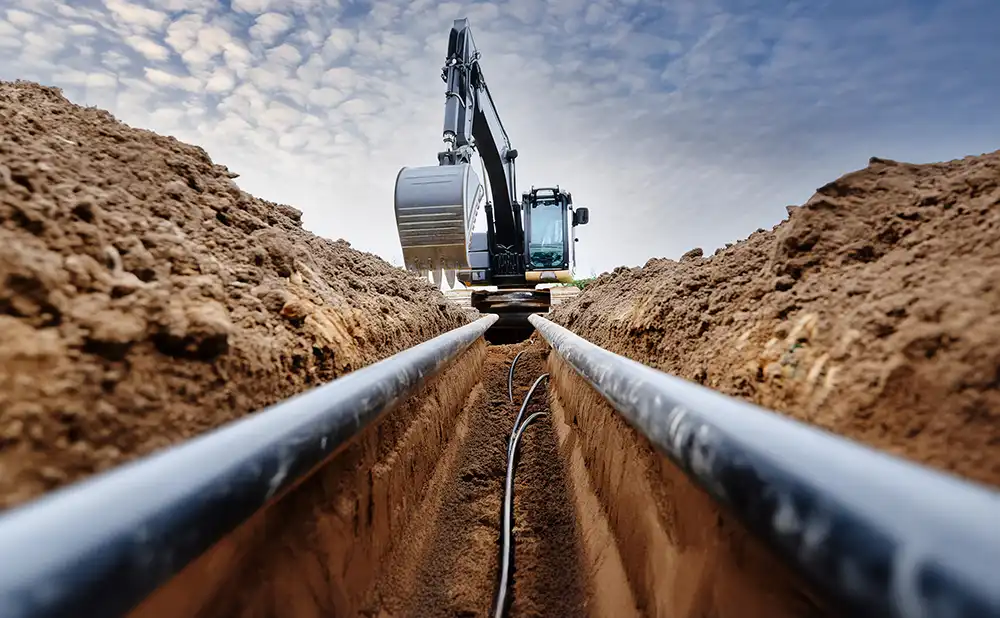Trenching and excavation work remains one of the most dangerous activities in construction and industrial settings. Cave-ins and collapses are among the leading causes of workplace fatalities, yet many of these incidents are entirely preventable. Understanding the most common mistakes that put workers at risk is the first step toward creating safer job sites.
The Five Most Critical Trenching Safety Mistakes
1. Lack of a Competent Person On-Site
The most frequent and dangerous mistake safety consultants encounter is the absence of a properly trained competent person at the work site.
A competent person isn’t just someone with a leadership title—they must be specifically trained in excavation hazards, soil classification, protection systems, and inspection procedures. This individual is responsible for:
- Conducting daily inspections before work begins
- Classifying soil types (A, B, or C)
- Determining appropriate protection methods
- Ensuring proper access and egress requirements
- Making critical safety decisions when conditions change
The Reality: Just because someone is a foreman doesn’t automatically make them a competent person for excavation work. Proper certification and training are essential.
2. Inadequate or Missing Daily Inspections
Many companies fail to conduct proper daily inspections or document them appropriately. The competent person must inspect excavations before each shift and after any event that could affect trench stability, such as rainstorms.
Key Inspection Requirements:
- Must be conducted by the competent person
- Documenting before each shift is the best practice
- Necessary after weather events or any condition changes
- Should be documented with written records
- For excavations over 20 feet deep, an engineer must be involved
3. Equipment Contact with Workers in Excavations
One of the most dangerous scenarios occurs when workers remain in excavations while heavy equipment is operating nearby. We don’t want to see somebody working inside an excavation when the operator is loading material.
The Hidden Dangers:
- A cubic yard of dirt weighs approximately 2,000 pounds
- Operators may lose sight of workers in the excavation
- Equipment buckets can make contact with workers
- Workers can be buried under falling material
- Check for gases/oxygen levels with a gas meter. Excavations can hold pockets of trapped gases like methane, which is flammable and poses an explosion risk
Best Practice: Exit the excavation site when moving material.
4. Water Accumulation and Improper Dewatering
Water in excavations creates deadly engulfment hazards that many teams are unprepared to handle.
Water-Related Hazards:
- Creates powerful suction that can trap workers
- Increases the risk of cave-ins and soil instability
- Requires specialized rescue equipment and procedures
- Can develop quickly during rain events
Proper Protocol: If dewatering is necessary, workers must wear flotation devices, safety harnesses with lifelines, and have a rescue plan in place. When possible, pumps should be lowered into excavations rather than having workers enter.
5. Failure to Follow Depth-Based Safety Requirements
Many teams don’t understand or follow the specific safety requirements that kick in at different depths:
At 4 feet: Access and egress (ladders) must be provided within 25 feet of any worker
At 5 feet: Protection systems must be implemented (benching, sloping, or trench boxes)
Over 20 feet: Engineering analysis is required
Common Mistakes:
- Not providing adequate ladder access
- Failing to implement protection systems at 5 feet
- Misclassifying soil types and using inappropriate protection methods
- Not calling for engineering support on deep excavations
Additional Critical Oversights
Underground Utility Strikes
Failure to call for utility location services (the local call-before-you-dig program: 811, Dig Safe, etc.) before excavating can result in serious accidents involving power lines, gas lines, or fiber-optic cables.
Weather Considerations
Both excessive rain and extreme heat can destabilize excavations. Rain creates obvious water hazards, while extreme heat can cause soil to crack and become unstable.
Inadequate Emergency Planning
Many companies focus on prevention but fail to develop rescue plans for when things go wrong. Safety Consultants USA can ensure you have these emergency plans in place.
How Safety Consultants USA Helps Prevent These Mistakes
At Safety Consultants USA, we understand that effective trenching safety goes beyond basic compliance. Our comprehensive approach includes:
- On-site competent person identification and training
- Customized safety training for excavation crews
- Site-specific safety plan development
- Regular safety audits and inspections
- Emergency response planning and training
We work directly with general contractors and their subcontractors to ensure everyone on site understands their role in maintaining excavation safety. Our consultants bring real-world experience from high-risk industries, such as oil and gas, where excavation safety protocols are rigorously enforced.
The Bottom Line
The most critical piece of advice for any employer overseeing excavation work is simple: ensure you have a properly trained, certified, competent person on-site at all times. This individual serves as the foundation of your entire excavation safety program.
Ready to improve your excavation safety program? Contact Safety Consultants USA today for a comprehensive site assessment and customized training solutions. Our experienced consultants can help you identify potential hazards and implement effective safety protocols tailored to your specific operations.





